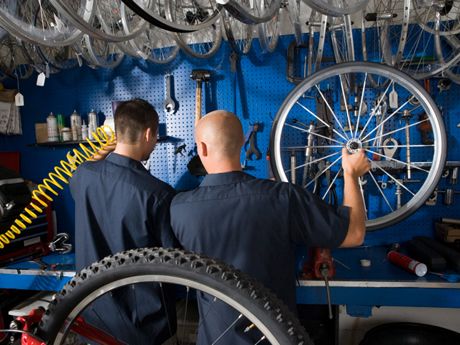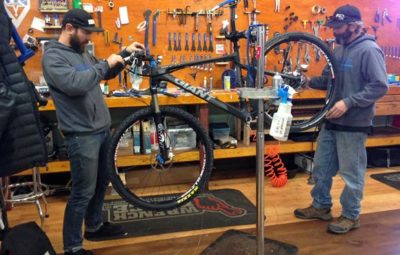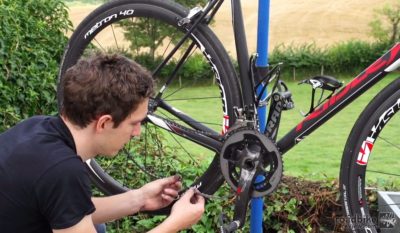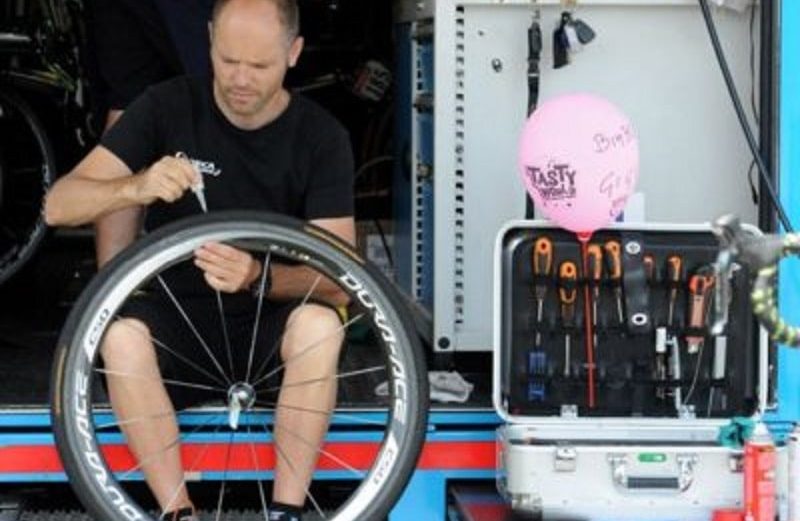You have another tire to mount on a wheel be that as it may, regardless of How To Change A Bike Tire you can’t get it on. It’s a situation numerous cyclists have thought of themselves as in.
In this article, we’ll go through the legitimate strategy for how to change a bike tire (both establishment and evacuation), make sense of why a few tires are so hard to fit, and recommend what devices you can utilize when you want assistance with an especially close tire and edge mix.
While introducing a tire on a wheel is something most riders can ordinarily oversee serenely, even prepared cyclists will encounter mixes were muscling the last piece of tire dab over the edge seems to require godlike strength and thumbs of steel.
The ascent of tubeless tires and edges across street, rock, and trail-blazing bicycles has expanded the recurrence of such issues as well, as tubeless-prepared tires are made with stiffer dabs and to more tight resiliences than comparable cherry-on-top tires.
An appropriate method while introducing or changing tight bike tires is pivotal to save yourself the stress and sore thumbs and to forestall harm to fragile or costly bike parts.
Past that, there are now numerous valuable apparatuses to assist with facilitating tight tires onto edges (as well as specific instruments you ought to stay away from).
Table of Contents
You Might Also Like ⇒
- How To Change The Inner Tube On A Bicycle
- Rowing Machine Vs Treadmill
- Best Exercise Machines To Lose Weight
- Best Aerobic Stepper
- Best Exercise Ball Chair
- Best Home Gym Equipment
- Best Fitness Bikes
- Does Biking Work Abs
- Exercise Pedals For Elderly
- Best Dual Action Exercise Bike
- Best Exercise Bike Under 300
- Best Exercise Bike Under 500
- Best Folding Exercise Bike
- Cycling Machine For Exercise
- Best Upright Exercise Bike
- Best Dumbbells For Home Gym
Step By Step Guide: How To Change A Bike Tire In 2022

Getting your tire-mounting strategy up to standard is the most effective way to guarantee your tires happen with the base measure of quarrel.
The rising pervasiveness of tubeless-prepared tire and wheel frameworks on bicycles of numerous sorts implies the legitimate strategy is more essential than any other time in recent memory.
The accompanying advances apply similarly to both cherry on top and tubeless-prepared tires, however, it merits really looking at our aide on the most proficient method to set up street tubeless tires or our ways to comprehend trail-blazing bicycle tubeless arrangement assuming that you’re introducing tubeless-prepared tires.
On the off chance that you’ve come here searching for tips on the most proficient method to introduce rounded tires, we’ll guide you to our how-to stick a cylindrical tire guide.
1. Start By Guaranteeing The Tire Is Unfurled And Suitably Molded To Go On The Edge
In the event that the tire isn’t pristine, this present time is a decent opportunity to really take a look at its condition and the state of the edge.
Supplanting an exhausted tire or harmed edge tape is critical to safe running and forestalling future cuts.
On the off chance that you’re supplanting a tire after a cut, guarantee you track down the guilty party (the item that caused the cut) and eliminate it prior to fixing or supplanting the cylinder and reinstalling the tire.
On the off chance that the tire is fresh out of the box new, it’s smart to ‘rub’ the tire into an enigmatically round shape since this will make getting the principal globule on a lot simpler.
2. With The Tire Appropriately Formed, Introduce One Globule of The Tire Onto The Edge
In the event that your tire has a directional track, make certain to introduce it in the right direction for ideal execution. This is typically set apart on the tire sidewalls.
It will typically be feasible to get the principal dab onto the edge without devices, utilizing the centers of your hands (as opposed to your thumbs) to lift the entire tire over the edge, however, a tire switch can be utilized to pull it over in excellent conditions.
Introducing tires with the name mark found halfway over the valve looks great (as we would like to think), however, it additionally finds key data, for example, tire size and least/most extreme filling pressures, over the valve where it tends to be effortlessly seen while swelling the tire.
3. Introduce The Internal Cylinder or Tubeless Valve
On the off chance that utilizing an internal cylinder, add a little air prior to introducing it. This will assist with forestalling the cylinder being squeezed by the tire globule while introducing the tire.
Try not to add an excessive amount of air, nonetheless, in light of the fact that this will make the cylinder occupy a lot of room inside the tire and forestall the tire dabs from falling into the most profound piece of the edge’s focal channel. Enough air to give the inward cylinder some fundamental shape is bounty.
Reward star tip: on the off chance that you’re utilizing plastic inward cylinders, a light tidying of bath powder on the internal cylinder will assist with keeping it from adhering to the tire or edge walls, or getting found out under the tire globule. This can additionally lessen the probability of squeezing the cylinder during establishment.
4. Start Introducing The Other Tire Globule Onto The Edge
Begin inverse the valve and gradually work your strategy for getting around each side of the edge, leaving the last piece of unmounted tire found halfway around the valve.
As you go, guarantee the two globules of the tire tumble down into the focal channel of the edge.
With tubeless tires and edges, the recently introduced dot will now and again sit on the edge rack, rather than falling into the focal channel, diminishing how much leeway in the globule. Just push the tire dot into the channel utilizing your thumbs.
5. Introduce The Last Piece of The Tire Globule Onto The Edge
As you get to the last piece of the dot, utilize the centers of your hands to pull the entire tire up and turn the two sides of the dot over the edge one small step at a time.
While it tends to be enticing to utilize your thumbs to drive the dab past the edge brink, assuming that the mix is exceptionally close you’ll probably wind up with sore thumbs.
Assuming you’re utilizing extremely slender or wide tires, which make it challenging to get the entire tire in the center of your hand, you might need to fall back on utilizing your thumbs to drive the tire sidewall past the brink. In these examples, wearing defensive gloves is prudent.
Assuming you’re battling, return around the edge and twofold check every one of the introduced pieces of the tire dots (on the two sides) has fallen into the edge’s focal channel. This is totally urgent to triumphing ultimately the last piece of the dab on with the base of the fight.
It’s ideal to introduce the leftover tire dot without falling back on devices, if conceivable, as inaccurate utilization of tire switches and other comparative apparatuses might possibly harm the edge, inward cylinder, or edge tape.
On the off chance that it’s impractical to introduce the excess tire globule the hard way, nonetheless, cautious utilization of instruments can assist you with pulling the last piece of a tight tire dot onto the edge. We’ll discuss that soon.
6. Check The Tire Is Accurately Introduced, Then Swell
Circumvent the edge and actually look at the internal cylinder (assuming you’re utilizing one) isn’t being squeezed or crushed under the tire dab. Assuming it is, essentially lift the tire up around there to deliver the cylinder and permit it to bounce back once more into the center of the tire.
In the case of utilizing tubeless valves, with tubeless-prepared tires, ensure the tire dabs are sat on one or the other side of the valve and make certain to add the valve stem holding nut onto the opposite finish of the valve.
When you’re certain both tire dots are accurately introduced around the whole circuit of the wheel, you can siphon up the tire. We have a manual to assist you with finding the right tire tension for your street bicycle, as well as guidance on culminating off-road bicycle tire pressure.
Instructions On Replacing A Bike Tire

Similarly, as certain tires can be precarious to introduce, eliminating a bicycle tire from a wheel can likewise be troublesome.
The legitimate method is vital to making things as simple as could really be expected, and keeping in mind that it’s occasionally conceivable to eliminate a bicycle tire without devices, two or three great tire switches can frequently make life a lot more straightforward.
1. Collapse The Internal Cylinder
In the event that you’re eliminating the tire as a result of a cut, the internal cylinder (expecting your wheel has one) will as of now have lost some air, however, you might, in any case, have to collapse it completely to help evacuation.
Unscrew the head on the valve and press it down to eliminate an abundance of air, then, at that point, eliminate the holding nut that strings over the valve and sits against the edge (accepting for a moment that you’re utilizing one – numerous riders don’t). You’re presently prepared to begin eliminating the tire.
Similarly to introducing tires, driving the two globules into the more deeply focal channel of the edge gives you the greatest measure of slack to work with.
2. Eliminating A Tire Without Tire Switches
With a graceful cherry on top of tires, it will commonly be feasible to eliminate the tire without falling back on utilizing tire switches.
Get a segment of the tire inverse the valve stem immovably in two hands and lift over-top the edge.
With a little segment of the tire dab over the edge, the remainder of the tire ought to leave the edge having gained ease.
This can be helpful on the off chance that you’ve gotten short on a ride without tire switches, yet in addition implies you’re less inclined to harm your edges, edge tape, or inward cylinders.
All things considered, harder street or trail-blazing bicycle tires (especially those in resolute tubeless-prepared dots) will probably require the utilization of tire switches.
3. Eliminating A Tire Utilizing Tire Switches
Embed the scooped edge of a tire switch under the tire dab and delicately switch the globule over the edge
With a little part of the tire dab off the edge, grasp the tire switch solidly, and push it forward (away from you) around the edge to eliminate the tire.
Assuming the tire is too close to even consider taking off utilizing just a single tire switch, don’t fall back on the beast forced.
All things being equal, embed a second tire a couple of centimeters from the first and utilize both to take off a bigger part of the tire.
This ought to then give you the necessary leeway to slide the remainder of the dab off utilizing a tire switch.
Resting on the highest point of the wheel can help, as it implies you’re not attempting to prevent the wheel from rolling away from you as you push the tire switch forward.
With one full side of the globule off the edge, you can then pull the entire tire away from and off the wheel.
For What Reason Are A Few Tires Harder To Introduce Than Others?
- Present-day bike tires and wheels are measured by ISO standard 5775, set by the European Tire and Rim Technical Organization (ETRTO).
- A size 28-622 tire code, for instance, shows a tire with an ostensible 28mm width and a 622mm inward dot measurement.
- As you would have speculated, such tires are viable with wheels that have a 622mm edge width. In old cash, that is a 700c wheel.
- In any case, as there is a wide range of sorts of bike tires and edges, made by endless various producers, there can be various justifications for why some bike tires are more enthusiastically introduced than others.
- In this part, we’ll investigate a portion of the primary guilty parties more meticulously.
1. Tire Development
First and foremost, anything that makes a tire packaging or its dot stiffer and less graceful is probably going to make it harder to introduce on some random edge.
It’s consequently that very good quality cherry on-top tires intended for street dashing and time preliminaries, for example, those made with unvulcanized cotton housings and adaptable tire dots, are normally more straightforward to introduce.
Conversely, a beefy tire intended for strength, high mileage, and minimal expense – maybe a colder time of year preparing tire or a tire expected for cycling to work – may demonstrate a lot harder nut to separate.
On off-road bicycles, lighter, quick-moving tires intended for cross-country hustling are probably going to be more straightforward to introduce than harder ones intended for enduro or downhill use. This is particularly valid for super-extreme downhill tires with weighty housings and wire dabs.
Moreover, the globules on tubeless-prepared tires are planned explicitly to be unstretchable, both for execution and security reasons. This commonly implies there is less edge for unfortunate establishment strategy, and more prominent strength of expert instruments might be required.
2. Edge Shape
The size and state of the edge you’re attempting to introduce a tire on can likewise have a huge effect on how simple the cycle is.
Present-day, wide, tubeless-prepared edges (either hookless or with customary globule snares) will probably highlight a profound focal channel. This helps since it diminishes the compelling width of the edge once the main site of the tire dab is introduced, which builds how much accessible leeway is in the subsequent dot.
Pushing the subsequent dab down into this channel as you work it onto the edge is critical to making tire establishments as simple as could really be expected.
Edges intended for use with cherry-on-top tires just may need such a profound focal channel, and can in this manner make the establishment of tight tires harder.
This can prepare to introduce a tubeless tire onto a cherry on top just edge undeniably challenging and is for the most part something to keep away from, regardless of whether the two might be in fact viable (giving you utilize an internal cylinder).
Nowadays, non-tubeless viable trail-blazing bicycle wheels are essentially unfathomable.
On account of a more extended history of tubeless innovation in mountain trekking, even non-tubeless-explicit heritage edges likewise might be convertible, with change frameworks accessible from many brands, like Stan’s and Muc-Off.
Moreover, by far most present-day trail-blazing bicycle tires will be tubeless viable, even down to the most financial plan contributions from significant makers. In this way, ‘cherry on top just’ is a term to a great extent held for street cyclists.
3. Size Resiliences And Unfortunate Blends
While the specific sizes of any haggle should definitively match the global norms, in all actuality, varieties in the assembling system will mean any item’s aspects will fall inside what is considered to be an adequate level of resilience.
A wheel’s edge breadth may, for instance, be a couple of tenths of a millimeter bigger than determined, and a tire’s globule measurement might be comparatively small.
While each disengagement may not cause any recognizable issues, an unfortunate blend of a curiously large edge and a modest tire can prompt an especially troublesome establishment process.
Ways To Introduce How To Change Tires On Bicycle| Best Tips

The best tip we can give for introducing extreme tires is that careful discipline brings about promising results.
The more comfortable you are with the legitimate method, the simpler it will be at the point at which you’re outside, far away from home, attempting to fix a cut with cold hands.
By and by, there will without a doubt be times when you want to fall back on utilizing expert devices, for example, tire switches or tire dab seating instruments.
There is, obviously, no disgrace in this. All things considered, no awards for having the option to introduce tires without apparatuses.
The only thing that is important is you can undoubtedly and securely set up your bicycle, whether doing such at home or by the roadside or trail.
1. Gloves
Intense studio gloves can assist with safeguarding your hands from strain and rubbing.
They can likewise make snatching a small bunch of tires safely somewhat more straightforward, particularly in the event that you’re working in hot circumstances or with sweat-soaked palms.
Tire switches
Tire switches can be important in persuading the last part of a tight tire dab onto an edge, and are something each cyclist ought to convey with them while riding (frequently in a seat pack). They are likewise exceptionally valuable while eliminating a tire.
While holding the contrary side of the tire set up on the edge, utilize a solitary tire switch to lift a little part of the globule onto the edge. Rehash until the leftover globule is all introduced.
Try not to begin in that frame of mind of the excess globule and endeavor to lift everything over in one go. That is a recipe for a wrecked tire switch and heaps of swearing.
Similarly, be mindful so as not to harm the edge tape while utilizing tire switches – particularly ones that have seen weighty use and may have scratches or sharp edges.
The best tire switches are commonly made from extreme plastic, with a slim area of strength for the however wide tip. Pedro’s tire switches are top picks of our own, yet anything comparable ought to finish the work.
For the most part, metal tire switches ought to be stayed away from, particularly in the event that you have carbon edges, as these can harm your edges.
There are additionally current advancements in the unassuming tire switch, like the Tire Glider or the Crankbrothers Speedier Lever.
These plan to persistently introduce the dab as you push it around the edge. The two instruments likewise incorporate a more conventional scooped edge to help evacuation of tires.
At a comparative size and weight to customary tire switches, they are likewise reasonable for conveying in a seat pack or pullover pocket.
2. Tire Globule Seating Instruments
Expert tire-seating instruments, like Kool Stop’s Tire Jack (and comparable gadgets by different brands), can save you a lot of problems while introducing tight tires.
The unbending piece of the instrument lays on the edge, while the pivoted part arrives over the tire and snares onto the tire dab. The globule can then be pulled over the top of the edge.
We would say, these devices are fabulous at getting obstinately close tires onto edges with the least fuss. The just drawback is they’re regularly too enormous to even consider conveying in a seat pack or shirt pocket for streetside use.
In any case, they are by and large light to the point of conveying in bikepacking sacks, a cycling rucksack, or a hydration pack.
A globule seating device could, hence, be a reasonable piece of unit to take on an experience or long trail blazing bicycle ride, on the off chance that you realize you could experience difficulty reinstalling your tires after a cut.
3. Foamy Water
In the case of introducing tubeless tires, some foamy water can assist with greasing up the edge and tire dot interface, facilitating the capacity of the tire dot to slip over the edge.
It’s not worth difficult this stunt while utilizing internal cylinders, in any case, as a wet cylinder can adhere to within a tire, conceivably causing a cut.
4. Warm Water
Best Comfort Bike specialized proofreader, Tom Marvin, proposes extreme, box-new trail-blazing bicycle tires can be made somewhat more malleable by warming them in warm water for a couple of moments.
Whenever they’ve heated up, the elastic and tire corpse ought to have sufficiently mellowed to permit you to all the more effectively shape the tire and introduce the principal dab onto an edge.
5. Tubeless Tire Plugs
As currently talked about, introducing tubeless tires can frequently be more troublesome than introducing comparable cherries on top.
Thus, fixing a tubeless cut utilizing tire fittings can frequently assist you with trying not to have to eliminate the tire dab from the edge while away from home.
Stan’s NoTubes DART tubeless fix pack and Muc-Off’s Stealth Tubeless Puncture Plug set are two units we rate exceptionally.
We’d in any case suggest conveying an extra cylinder or two if all else fails, yet tubeless tire plugs are normally the BikeRadar group’s go-to level fixing arrangement, on the main occasion.
What Else Can Exacerbate The Issue?
1. An Excessive Amount of Edge Tape
While introducing edge tape (tubeless-explicit etc.), it’s vital to not utilize a greater number of layers or ticker tape than is required.
An excessively thick edge tape, or a couple of wraps too much, really expands the width of the wheel, significance there will be less leeway in the dot when you come to introduce a tire.
2. Tubeless Tire Liners
Tubeless tire liners, for example, the CushCore tire assurance framework or Vitorria’s Air-Liner packs for street, rock, and trail blazing bicycles, are perfect for offering expanded edge and cut security, and the capacity to securely run lower pressures in tubeless-prepared tires.
Notwithstanding, they additionally occupy huge rooms inside the tire by plan, which can forestall the tire globules from dropping into the edge’s focal channel during establishment.
As we continue to rehash, this lessens the accessible leeway in the tire globule, making tire establishment and expulsion harder.
Consequently, Vittoria incorporates a particular arrangement of tire globule forceps and dot holding tabs with its Air-Liner street unit. You’ll more likely than not need them.
3. Utilizing Internal Cylinders With Tubeless-Prepared Tires
While tubeless-prepared tires are viable with internal cylinders, the inward cylinder can work to some degree like a tubeless tire liner during establishment.
Once more, it occupies room inside the tire and forestalls the tire dabs from falling into the most profound piece of the edge channel.
This is particularly evident while introducing slender (sub-25mm) street bicycle tires on moderately restricted edges (sub-19mm inward width), as there’s less space for the globules and the cylinder in the focal channel of a tight edge. Indeed, even a marginally swelled cylinder can push against the walls of a restricted tire.
While we truly do exhort marginally swelling the internal cylinder preceding establishment to keep away from it getting squeezed by the tire, it could be important to completely collapse the inward cylinder to permit the most extreme measure of slack in the tire dabs.
Warnings
- It’s typical for your tires and cylinders to disintegrate after some time. Bicycles kept inside will probably require tire substitution each 10-15 years, while bicycles kept outside will probably require tire substitution following 7 years.
- At the point when you eliminate your tires, be extremely cautious with them so that nothing gets twisted. In the event that you coincidentally harm a section on your bicycle, you’ll probably have to fix or supplant that part.
- Never over-expand an internal cylinder, as it can make you victory a tire. Check your tire wall for the suggested pressure level.
- Get the internal cylinder far from hot articles. Intensity can extend the cylinder and even reason it to detonate.
Last Thoughts
Ordinary bike support and legitimate stockpiling can assist with keeping a bicycle in top condition over long stretches of proprietorship. Continuously supplant or fix any tire harm quickly to try not to twist a bicycle’s wheel. Additionally, during the maintenance or substitution process, try to monitor every single little part, similar to nuts, lock rings, or valve covers. While little in size, their motivation is fundamental for the bike’s capability, and losing one during maintenance can make another issue waiting to be settled before the bicycle can be utilized once more.




